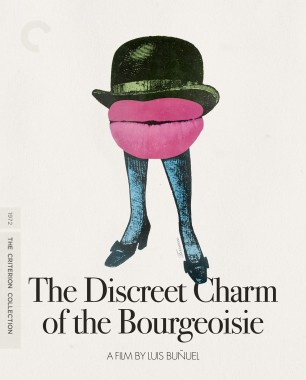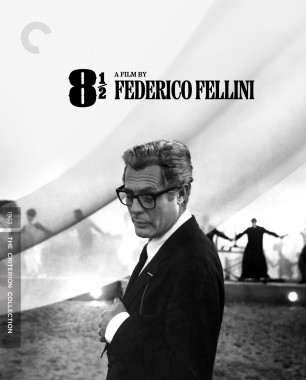
Roger Corman’s Top10
A genuine American movie legend, the eighty-seven-year-old producer and director Roger Corman has been in the film business since the early 1950s. He is perhaps best known for the low-budget horror films he issued with remarkable speed in the early ’60s, including The Little Shop of Horrors (1960), The Pit and the Pendulum (1961), The Raven (1963), and The Terror (1963), as well as the counterculture classics The Wild Angels (1966) and The Trip (1967), both starring Peter Fonda. In 1970, Corman founded the independent production studio New World Pictures, which became the U.S. distributor for foreign films by the likes of Ingmar Bergman, Federico Fellini, and Akira Kurosawa, and his Criterion list reflects his love of classic art-house cinema. Corman’s estimable career was celebrated in the 2011 documentary Corman’s World: Exploits of a Hollywood Rebel.
Photo by Grant Delin
-
1
Michelangelo Antonioni
L’avventura
Never has “waiting around” been so glorious. Postwar ennui meticulously staged and photographed, a fin de siècle troupe of the idle rich, such empty lives and their inconstant echoes. But Antonioni really had the last laugh, for this “adventure” film is more a solemn nod to Godot than any real outing or frolic.
-
2
Vittorio De Sica
Bicycle Thieves
All you need is a camera and a great story. Of course, finding even professional actors with that kind of gravitas and measure is difficult. But there are greater things behind it all: that scene, with the never-ending stacks of sheets piled high, that scene is everything—it attests to all the tiny, hidden tragedies of the everyday that occur around us, that we ignore in our own search for life and place, that we forget in our own hunt for the bicycle thieves.
-
3
Luis Buñuel
The Discreet Charm of the Bourgeoisie
We all know the deal: a group of people want to get together and do something simple—see a movie, drink some coffee, eat some dinner. But it never works out that way. That’s what Buñuel did here, but with greater stakes/steaks on the table. Levity and seriousness, the intrusion of the surreal into the upper crust, forcing a single question at the end: would anyone portrayed in the film actually watch the film? After all, each oneiric explosion in it is something the politesse class doesn’t speak of at the table: sex, death, religion.
-
4
Federico Fellini
8½
Perhaps all directors only make films about themselves. If so, this film is the apex, the zenith, of all narcissistic or self-reflexive endeavors. It’s Freud gone Italian: alienation in autos and a screaming ascent into some rarified atmosphere, then, of course, what goes up must come crashing down. And then it peels another layer off to ask: what does a filmmaker do in midlife creative crisis? How does one reinvent authenticity? I think most directors ask themselves that daily.
-
5
Sergei Eisenstein
Ivan the Terrible, Part I
Potemkin is taught in film schools worldwide, more like a fossil than a real, breathing animal that must be dissected. Watch it because it’s important. So budding filmmakers are taught about formalism and montage, and they rarely get to watch Eisenstein’s later works, like Ivan the Terrible. They’re missing out: imagine a biopic run through the meat grinder of German expressionism, with every image connoting the pitfalls of absolute power, with cutaways of faces that are thankfully forever captured in celluloid marble, with a sense of mounting state paranoia and ever-crumbling artifice. Potemkin may have the classic scenes, like the dish, the lion, the guns, but Ivan has taken all those early lessons and boyhood feints and given us a masterpiece.
-
6
Elia Kazan
On the Waterfront
Brando and Kazan. If there is some pearly gates studio, many of the films being shown at the Angelic Cinematheques will have these heavyweights working together. Urban poetry, raw and unrestrained masculinity, a heightened method of “real” acting. The kind of picture that really pulls you in, forces all the senses to work in tandem. Hypnotic and earthy, the real stuff of cinema, electrolysis of the rough and the holy.
-
7
Stanley Kubrick
Paths of Glory
Pick one Kubrick—tough. Pick one of Kubrick’s films about war—still tough. But there is a unique quality of Paths of Glory that speaks not only about the power of war films as antiwar vehicles but also about the issue of war in general. That despite how much the methods men use to murder, maim, and mutilate have changed over the years, the truth of man’s inhumanity to man has been a sick constant, that barbed wire and bureaucracy are equal methods to delay and destroy, and that giving a face to the mounting numbers is as important now as it was in the past.
-
8
Akira Kurosawa
Rashomon
Narrative films will never grow stale as long as filmmakers have tricks like Rashomon structures in their bag. Not only filled with fantastic acting, tremendous cinematography, and a haunting soundtrack, Rashomon attempts what great films always strive for—to express an inexpressible . . . in this case, the nature of truth, or . . . the nature of humans’ inability to realize the fallibility of their own perception, their own stories.
-
9
Jean Renoir
The Rules of the Game
If the game is a film, then what are the rules? According to Renoir, who like Hoyle could load a deck with the best of ’em, you take a cast that presages Altman’s later operatic ensembles, you take an upstairs and downstairs at war through manner and subterfuge, you take a manor house with a camera that has an omniscient sweep—and you get one very fine film that can tell you more about social politics and film in a single two-hour period than Emily Post or a textbook can in a month or a lifetime.
-
10
Ingmar Bergman
The Seventh Seal
After a life of watching silver-screen idols and debonair ne’er-do-wells, this film came out like a punch to the sternum. It showed that film was not simply a convenient vessel for story and adventure but could say much deeper things about us, as if we were shifting pieces on chessboards . . . but also about death, about the Crusades, about fighting or playing for one’s soul. And what comes after it all: a credit scene, starring everyone important in your life? There’s more to it, more to this film than it lets on—and I’ve been thinking about it for years.














